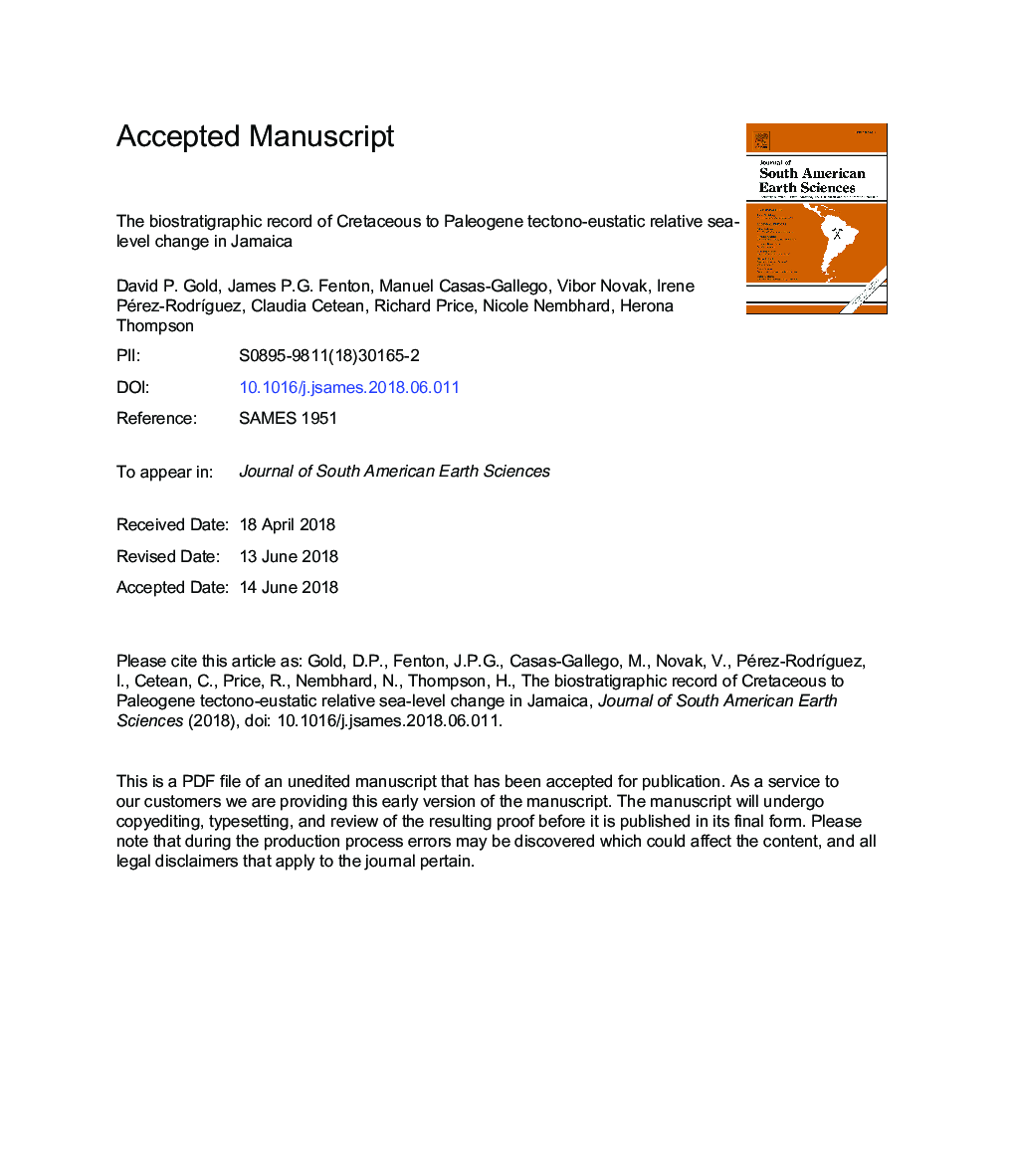| Article ID | Journal | Published Year | Pages | File Type |
|---|---|---|---|---|
| 8907577 | Journal of South American Earth Sciences | 2018 | 65 Pages |
Abstract
The island of Jamaica forms the northern extent of the Nicaraguan Rise, an elongate linear tectonic feature stretching as far as Honduras and Nicaragua to the south. Uplift and subaerial exposure of Jamaica during the Neogene has made the island rare within the Caribbean region, as it is the only area where rocks of the Nicaraguan Rise are exposed on land. Biostratigraphic dating and palaeoenvironmental interpretations using larger benthic foraminifera, supplemented by planktonic foraminifera, nannopalaeontology and palynology of outcrop, well and corehole samples has enabled the creation of a regional relative sea-level curve through identification of several depositional sequences. This study recognises ten unconformity-bounded transgressive-regressive sequences which record a complete cycle of relative sea-level rise and fall. Sequences are recognised in the Early to 'Middle' Cretaceous (EKTR1), Coniacian-Santonian (STR1), Campanian (CTR1), Maastrichtian (MTR1-2), Paleocene-Early Eocene (PETR1), Eocene (YTR1-3) and Late Eocene-Oligocene (WTR1). These transgressive-regressive cycles represent second to fourth order sequences, although most tie with globally recognised third order sequences. Comparisons of the Jamaican relative sea-level curve with other published global mean sea-level curves show that local tectonics exerts a strong control on the deposition of sedimentary sequences in Jamaica. Large unconformities (duration >1 Ma) are related to significant regional tectonic events, with minor overprint of a global eustatic signal, while smaller unconformities (duration <1 Ma) are produced by global eustatic trends. The relatively low rates of relative sea-level rise calculated from the regional relative sea-level curve indicate that carbonate production rates were able to keep pace with the rate of relative sea-level rise accounting for the thick successions of Maastrichtian carbonates and those of the Yellow and White Limestone Groups. Carbonate platform drowning within the White Limestone Group during the Oligocene to Miocene is attributed to environmental deterioration given the low rates of relative sea-level rise.
Related Topics
Physical Sciences and Engineering
Earth and Planetary Sciences
Earth and Planetary Sciences (General)
Authors
David P. Gold, James P.G. Fenton, Manuel Casas-Gallego, Vibor Novak, Irene Pérez-RodrÃguez, Claudia Cetean, Richard Price, Nicole Nembhard, Herona Thompson,
